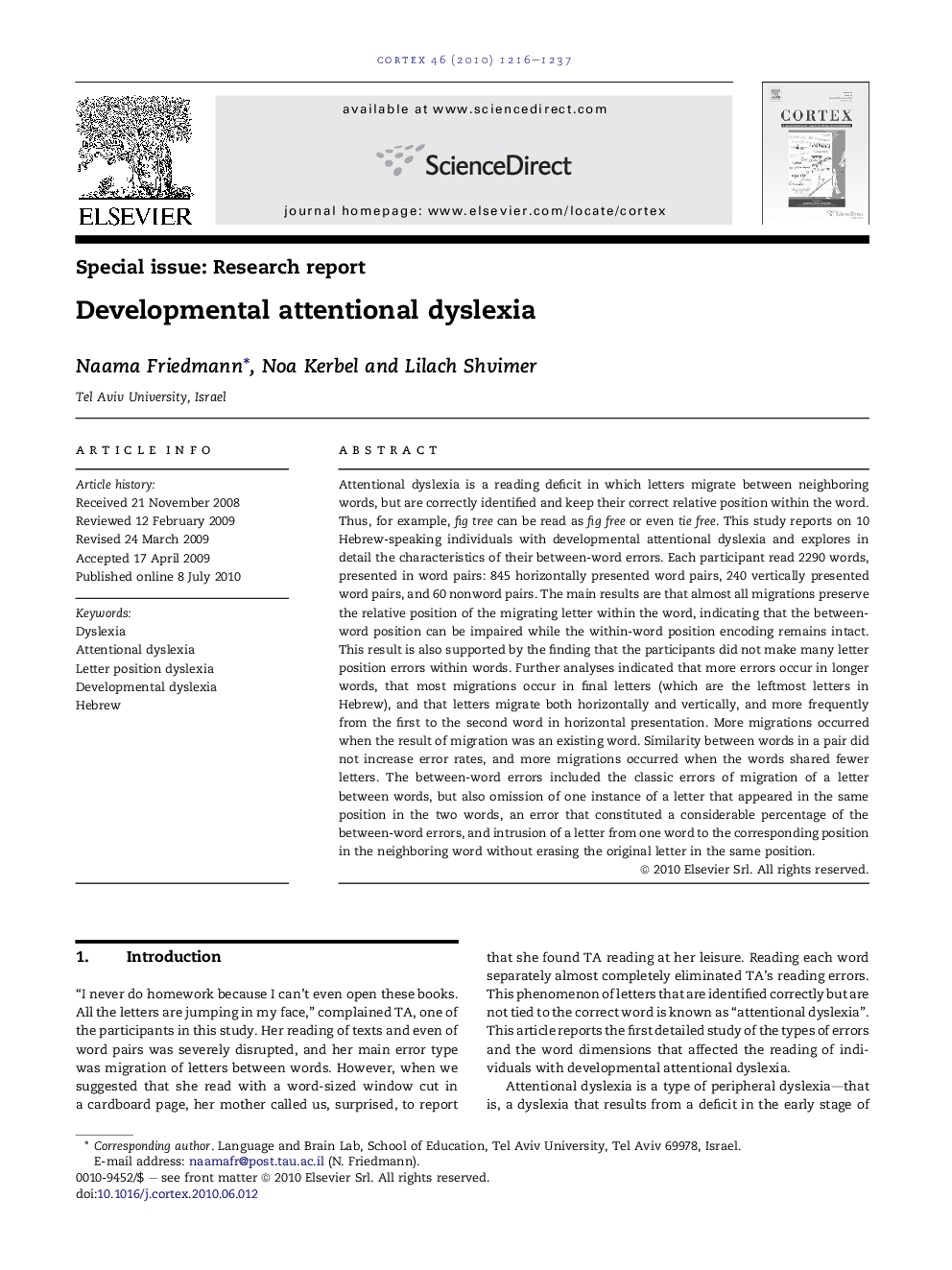| Article ID | Journal | Published Year | Pages | File Type |
|---|---|---|---|---|
| 10463345 | Cortex | 2010 | 22 Pages |
Abstract
Attentional dyslexia is a reading deficit in which letters migrate between neighboring words, but are correctly identified and keep their correct relative position within the word. Thus, for example, fig tree can be read as fig free or even tie free. This study reports on 10 Hebrew-speaking individuals with developmental attentional dyslexia and explores in detail the characteristics of their between-word errors. Each participant read 2290 words, presented in word pairs: 845 horizontally presented word pairs, 240 vertically presented word pairs, and 60 nonword pairs. The main results are that almost all migrations preserve the relative position of the migrating letter within the word, indicating that the between-word position can be impaired while the within-word position encoding remains intact. This result is also supported by the finding that the participants did not make many letter position errors within words. Further analyses indicated that more errors occur in longer words, that most migrations occur in final letters (which are the leftmost letters in Hebrew), and that letters migrate both horizontally and vertically, and more frequently from the first to the second word in horizontal presentation. More migrations occurred when the result of migration was an existing word. Similarity between words in a pair did not increase error rates, and more migrations occurred when the words shared fewer letters. The between-word errors included the classic errors of migration of a letter between words, but also omission of one instance of a letter that appeared in the same position in the two words, an error that constituted a considerable percentage of the between-word errors, and intrusion of a letter from one word to the corresponding position in the neighboring word without erasing the original letter in the same position.
Keywords
Related Topics
Life Sciences
Neuroscience
Behavioral Neuroscience
Authors
Naama Friedmann, Noa Kerbel, Lilach Shvimer,
